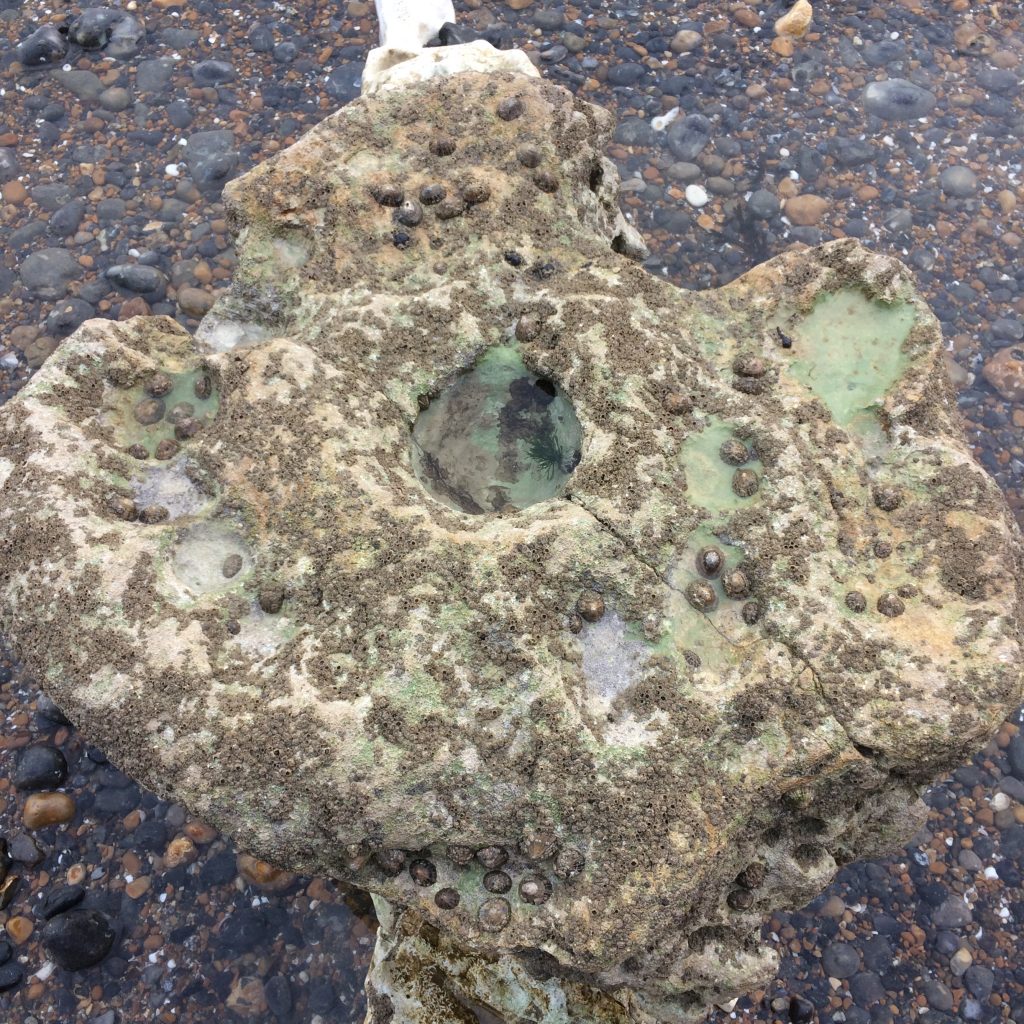
This is a picture of one of the ammonite fossils at Telscombe beach. There’s no reference for size in this image (what an oversight) but I can tell you the fossil is around 1 meter across. Apparently it is 100 million years old. Standing next to it, I was literally staring down at the seabed of an ocean so ancient that when this animal was alive there was no-one to name it, no-one to be aware of it’s vastness. But geologists have reconstructed the landmasses and waters of that period and they have given them names, from this long distant perspective in time. Perhaps I was standing on the seabed of the Tethys Ocean? My knowledge of geology isn’t good enough to know for sure. Here’s a list of ocean’s I would like to visit, but never can because they are lost to time (are the places in this list more alien than places that might be visited in deep space today?):
Panthalasa Super Ocean. Lapetus Ocean. Pannonian Sea. Rheic Ocean. (I like the sounds of these words and how they feel as they rolled out of my mouth when I speak them.)